In a world where many Himalayan treks have become over-commercialized, Yulla Kanda offers a unique blend of spiritual solitude, raw nature, and mythological charm. It’s one of those rare places where time slows down, and the soul finds resonance in silence. Whether you are a devout pilgrim, a passionate trekker, or a traveler searching for something extraordinary—Yulla Kanda delivers an experience that is both humbling and uplifting.
Nestled high in the Rora Valley of Kinnaur district, Himachal Pradesh, Yulla Kanda is one of India’s most awe-inspiring yet lesser-known Himalayan gems. Situated at an altitude of 3,895 meters (12,778 feet), Yulla Kanda is not just a destination for adventure lovers but a place where spirituality and nature merge in profound harmony. At its heart lies the world’s highest Krishna temple, poised beside a serene glacial lake—a sight so rare and majestic that it defies easy description. Unlike the more frequented treks of Himachal like Triund, Hampta Pass, or Kheerganga, Yulla Kanda remains relatively unexplored. This seclusion, however, adds to its charm. The journey is as much about discovering yourself as it is about discovering the place.
The journey for this quest of the highest Krishna Temple in the world started in 2021 when I was exploring Narkanda. On the top of Hatu Peak, I was taking a walk and caught a couple of foreigners talking about their journey with a local man. They were very excited and the adrenaline could be witnessed on their faces. I couldn’t hear much of the conversation but “The highest and most beautiful Krishna Temple” was stored in my brain. It was June 2021 and I had the blueprint of the trek by the next week. But fate had other options and we got hit by another wave of Covid. Plans had to be postponed to the next year and post the damages done by monsoons of 2022 in Himachal Pradesh, I was desperate to get here. The monsoons had passed and it was October. I was sitting in my hostel dormitory and saw a post on Instagram of Yulla Kanda. I did not see left or right and straight away stormed into my friend’s room. “Bag nikaal aur samaan daal; Aaj raat ko nikalna hai”. No ifs no buts. And that’s how we started off for this adventure which I considered to be the best impromptu plan executed and in style. This is one of those stories that I would surely boast about to my grandchildren.
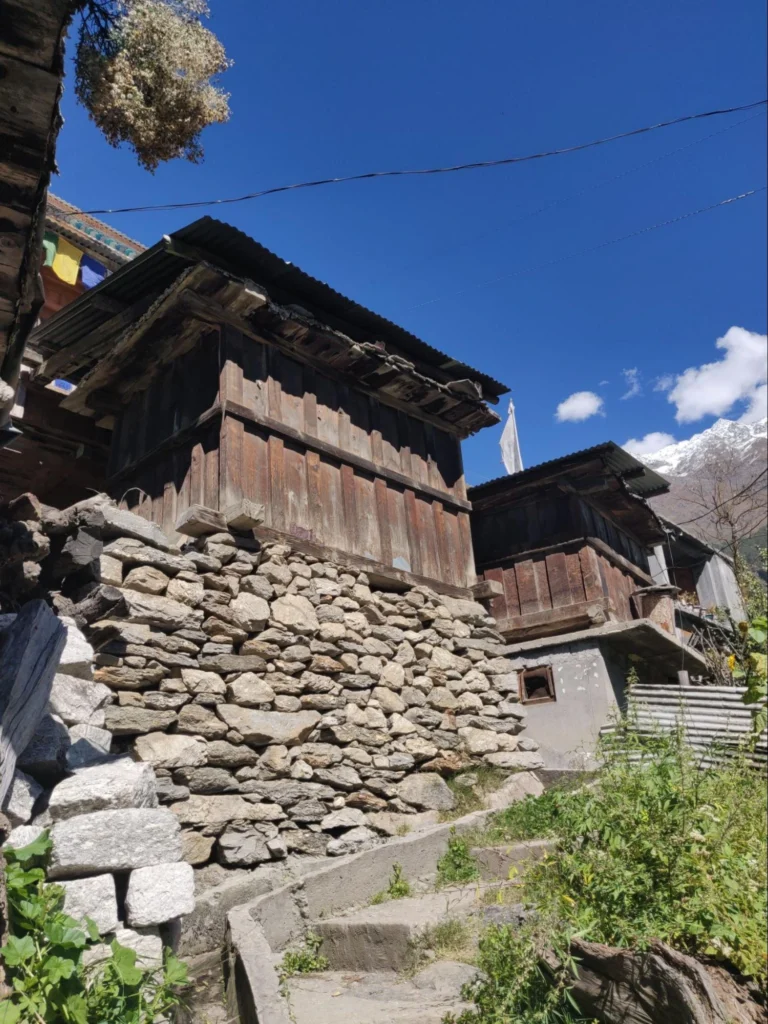
We were 2 trekkers without any camping gear going on to one of the remotest treks in Himachal Pradesh. The stakes were high but we were determined enough. We departed from Chandigarh in an overnight bus to Shimla. We reached Shimla around 5 am and further took another bus to Rampur Bushahr. We changed to another bus from Rampur which was on its way to RecongPeo. We deboarded at Tapri at around 10 am. We took a private taxi from Tapri to Yulla Khas village as the road was very steep and bumpy. We reached Yulla Khas around 11 am and found a homestay. We ate some lunch and took sleeping bags from the owner. There was a hut on the ridge where we could take shelter for the night and resume our journey the next day. We started our trek after 1 pm from the road head of Yulla Khas.
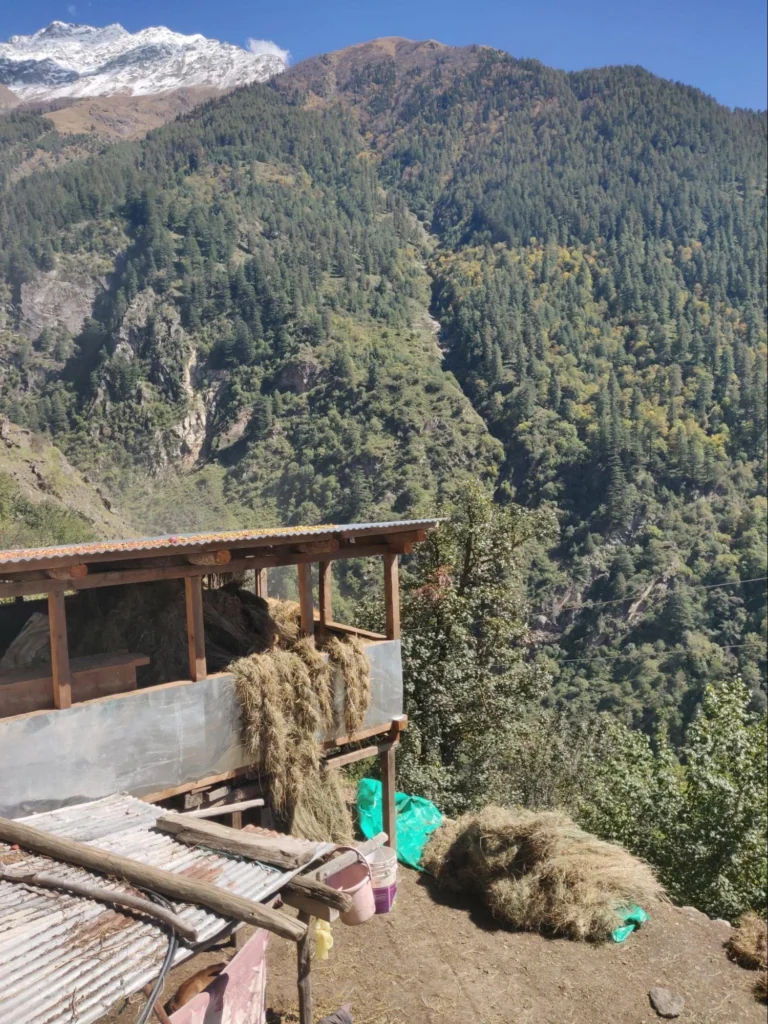
The Kinnaur region is home to a unique mix of Hinduism and Buddhism, evident in its temples, gompas, and traditional attire. Locals in Yulla and Urni villages still wear traditional Kinnauri caps and speak dialects like Kinnauri and Himachali. Travelers are often welcomed into homes with locally grown apples, buckwheat rotis, and homemade butter tea. In harvest seasons, cultural festivals light up the villages with traditional music, dance, and rituals honoring deities of the land. Staying in these villages not only supports the local economy but also offers a rare opportunity to immerse yourself in the culture of a region that has preserved its heritage for centuries. Don’t miss out on Kinnauri apples, locally brewed drinks, or conversations with elders who often share folktales that breathe life into the surrounding mountains.
The trail passes through a few houses of the Yulla village and is in the form of stairs for ease. There were resting spots in the village and there were multiple trails which led to different routes. We went in October and it was the off-season so there was no crowd at all. We crossed the village and moved along the trail and after an hour, we saw the first board of the Yulla Kanda stating the details and facts of the place. We knew that we were on the right track and resumed our journey.
Yulla Kanda’s trail was a biodiversity corridor, teeming with flora and fauna typical of high-altitude Himalayan ecosystems. The lower stretches of the trek were covered in deodar, pine, and oak forests, which gradually gave way to rhododendrons, juniper, and alpine shrubs. In the summer months, the meadows were carpeted with wildflowers, including Himalayan blue poppies, primulas, and marigolds. Though elusive, the region was also home to Himalayan monals, barking deer, and occasionally snow leopards and Himalayan ibex in the upper ranges. The lake itself supports several species of alpine aquatic life and attracts migratory birds during certain seasons. This ecological richness made it not just a spiritual or adventure destination, but also a potential paradise for nature lovers, botanists, and wildlife photographers.
We entered the dense jungles of Kinnaur and it was truly magical. We were alone on this trail and the news was that there were no other trekkers either going up or descending down. We crushed the dry leaves under our feet and the cracking sounds echoed around. It was around 4 pm and we crossed the forest and entered the top of the hill (kanda). The name “Yulla Kanda” is justified as the top of the Yulla Khas. The ending of the forest and starting of the kanda is marked by a steel gate.
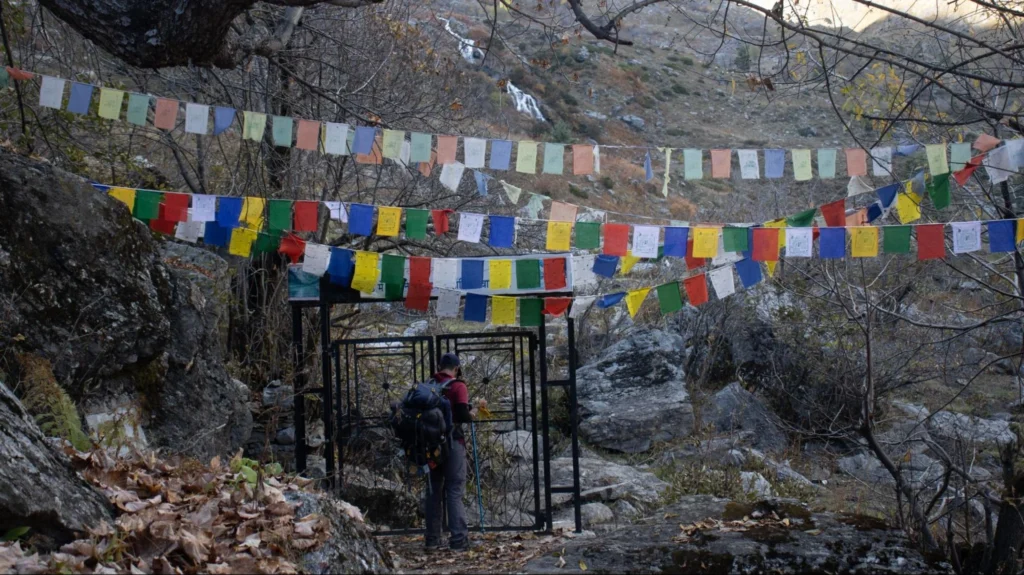
The trek distance from Yulla Khas to the temple is 12 km one way and the elevation gain of roughly 4,000 ft. We covered around 7 km and the remaining 5 km was supposed to be steeper and through meadows. We entered the meadow and started looking for shelter as the sun would set in some time.
We found an abandoned tent of a shepherd and thought that we could spend the night in that. I opened the tent as it was tied with ropes. There were utensils and gas canisters and basic survival necessities. There was a frying pan in front of me and I lifted it up to clear the way. There was a snake below it and it was a clear symbol that we should move away from the place. We packed it back and moved upwards to find the hut. The sunset was very beautiful but we were running late but the good news was that we weren’t the only humans on that mountain.
There was a shepherd with his flock on that hill and we had a sigh of relief. We exchanged a few greetings and he pointed us in the direction of the hut. We moved towards the hut and it almost got dark. We took a shortcut to reach our destination but it was a wrong decision. We were literally a few metres away from the hut but we couldn’t reach there because of some trees and thorny bushes in between. The light had totally vanished and it was completely dark with the two of us making our way out of the thorns.
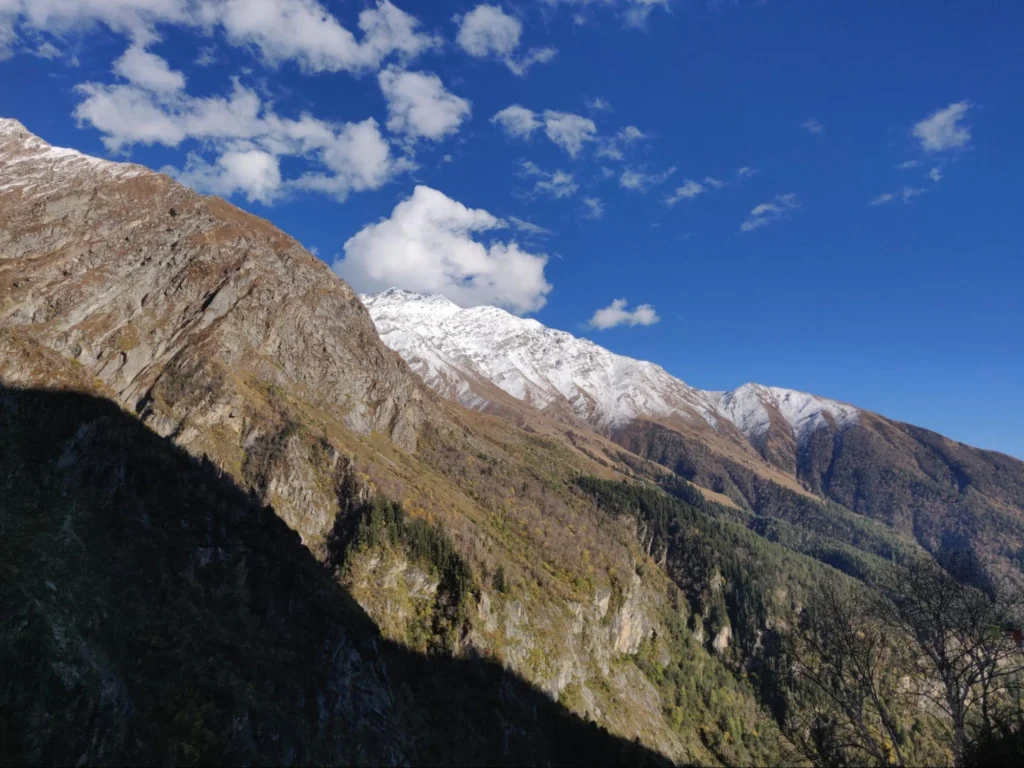
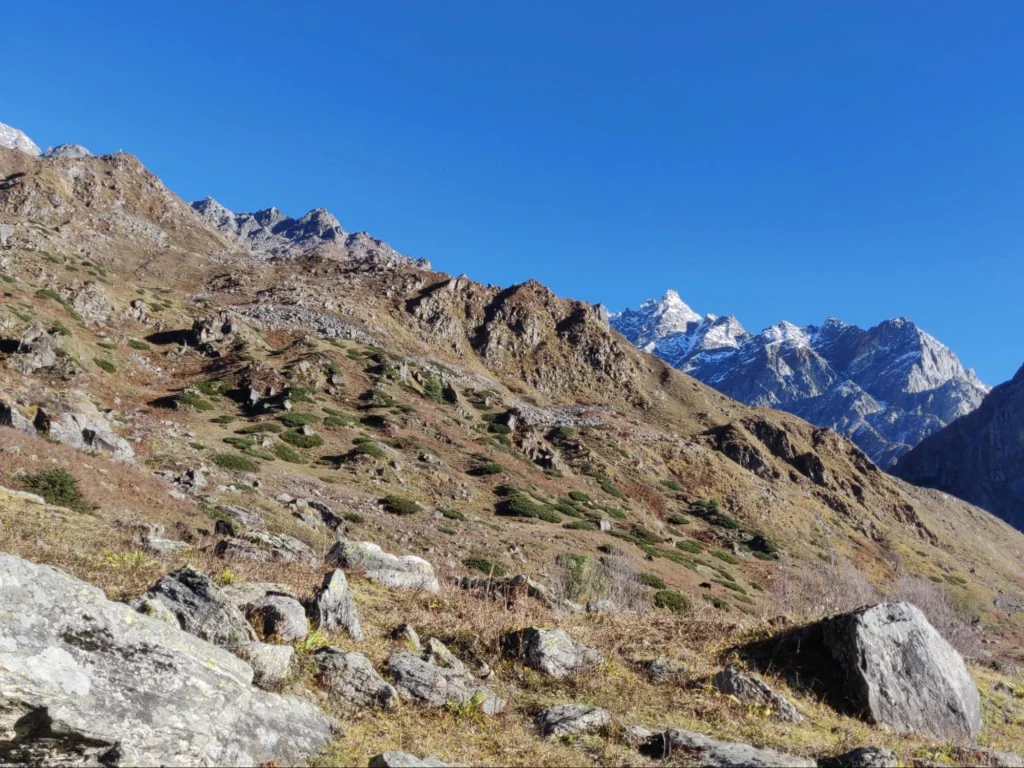
All we could see around were the eyes of the flock reflecting back the light of our headlamps. The situation was not in our favour and there was no chance that we could make up to the hut. So we decided to move back down to the shepherd and stay with him for the night. We somehow managed to reach him after a few minutes but those few minutes were scary. The shepherd’s name was Bhagwan Das and he was a resident of Yulla Khas. He made us some chapatis and we cooked Maggi. We shared our stories and he shared some of his. We eventually opened up our sleeping bags and passed off to sleep. It was a long night and his guard dogs were barking all night trying to keep the predators away.
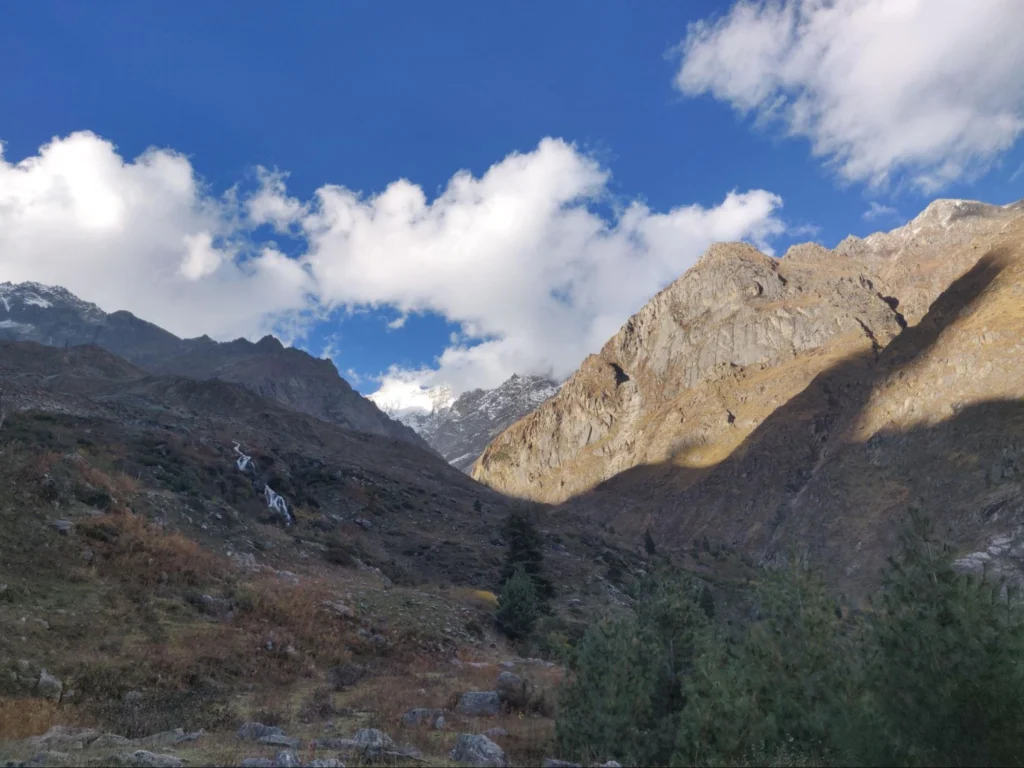
We woke up the next day and the aim was to reach the temple on time so that we could descend back to the village today. We started our trek around 8 am and made a rough route. We could see a small red flag on top of the hill marking the temple. We kept on trekking uphill and also passed the hut which was supposed to be our shelter for the previous night. We traversed the hill to find a better route to the temple. Finally, after a couple of hours of navigating and climbing, we reached the Yulla Kanda temple. I had never seen a landscape like that ever before.
Tucked away in the remote Rora Valley of Kinnaur district, Yulla Kanda sat at an altitude of 3,895 meters (12,778 feet) and boasts the world’s highest Krishna temple, a sacred site floating on the banks of a crystalline alpine lake. With its unparalleled beauty, historical depth, and off-the-grid appeal, Yulla Kanda remains one of India’s best-kept secrets.
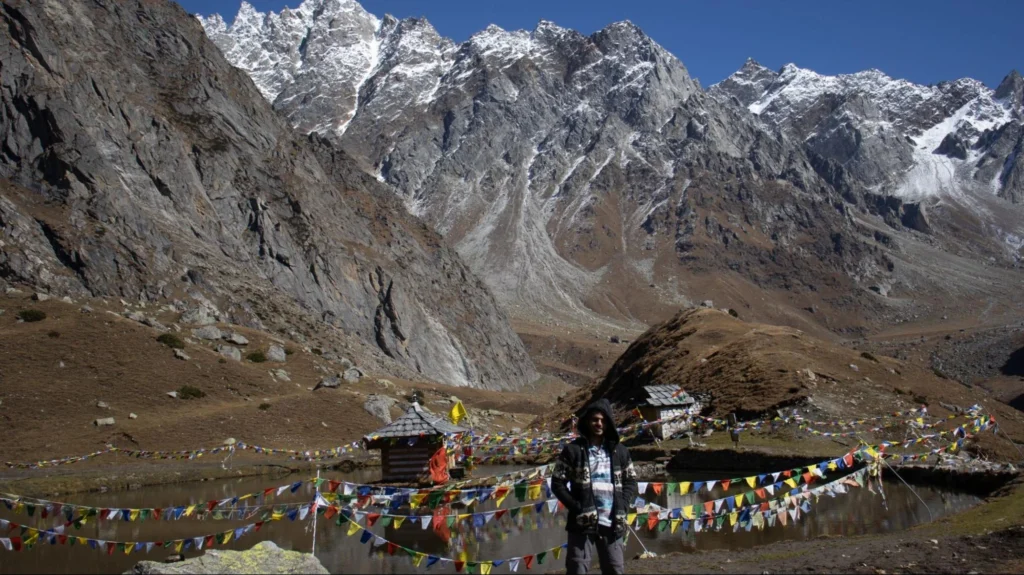
The centerpiece of Yulla Kanda was its centuries-old Krishna temple, nestled quietly beside a glacial lake. According to local legends, this sacred structure was built by the Pandavas—the heroic brothers of the Mahabharata, during their 14-year exile in the Himalayas. It is said that the temple was erected as a devotional tribute to Lord Krishna, their divine friend, guide, and protector. The connection to the Mahabharata gave the region an almost mystical aura. For pilgrims and spiritual seekers, trekking to Yulla Kanda was not just a physical challenge but a pilgrimage, reminiscent of the ancient tradition of traversing remote terrains to connect with the divine.
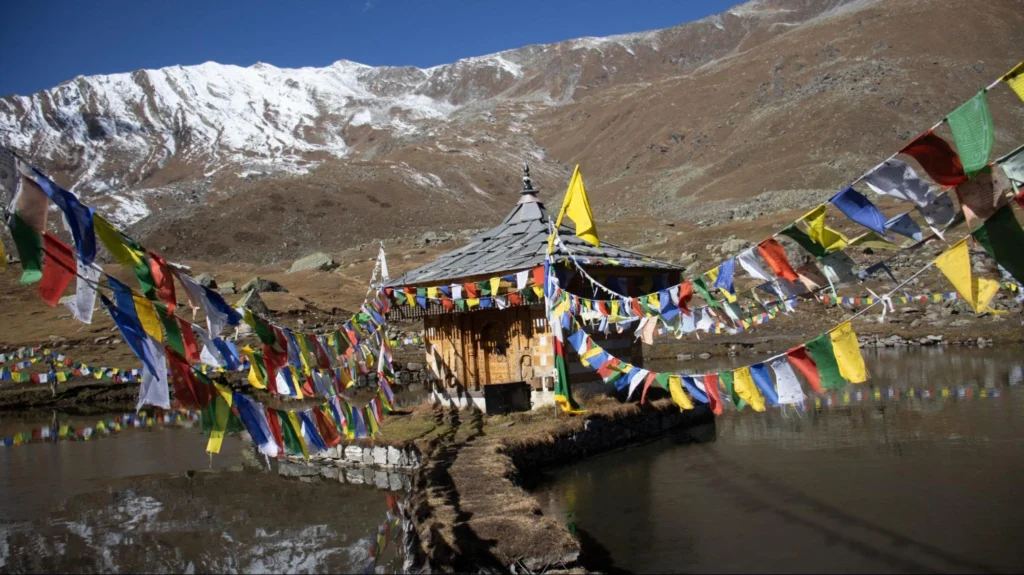
One of the most intriguing customs at Yulla Kanda is the local tradition involving the Kinnauri cap. According to local beliefs, if a pilgrim floats the cap upside down in the lake and it reaches the other side without sinking, the person’s wish will be granted, and they will find peace and joy in the coming year. However, if the cap sinks, the year ahead might be challenging. This symbolic act is both a test of faith and a reflection of the region’s deep-rooted cultural traditions.
Arriving at Yulla Kanda was a moment of pure transcendence. The glacial lake, cradled between ridges and open skies, reflected the hues of the changing light. The Krishna temple, with its humble architecture, became a place of stillness. There were no loud bells or rituals, only the silence of nature and the whisper of prayers in the wind. That moment, alone or with fellow travelers, was deeply meditative and transformative.
We removed our shoes at a distance and opened the temple premises. We stayed and meditated for a few minutes and then felt the vibe of the valley. It was just the two of us in the whole valley with snow covered peaks and a river running through the valley. We were finally at the World’s highest Krishna Temple and a year old dream got fulfilled that day. We started our descent shortly and thanked Bhagwan Das ji for his help and support. We descended back all the way to the village and went to the homestay. We returned our sleeping bags, ate Rajma Chawal and catched the evening bus which would drop us at Tapri. We catched the last bus of that day from Tapri all the way to Chandigarh. We completed this journey in 2 days & 3 nights including 30 hours of travel.
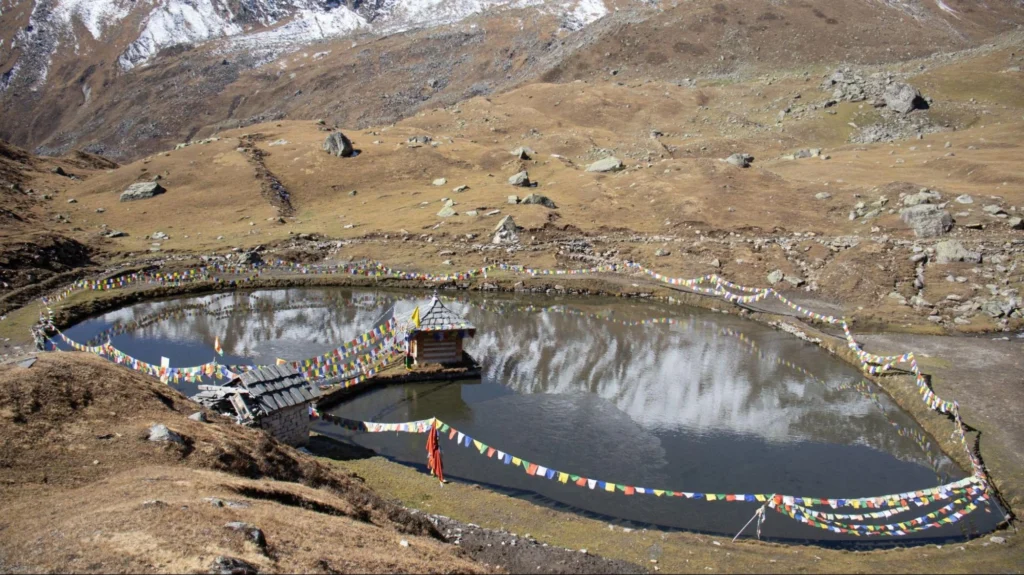
As word spreads about Yulla Kanda, the challenge is to keep it pristine. The trek is currently low-impact, but growing popularity may lead to pollution and trail erosion if not managed properly. Visitors are urged to follow eco-friendly practices such as not to litter and carry all the trash back. Using biodegradable toiletries and avoiding plastic bottles and disposable cutlery. Camping responsibly and respecting wildlife is essential. Local NGOs and community leaders are also exploring ways to create a sustainable trekking model, involving locals in tourism and ensuring benefits remain within the region.
Yulla Kanda is not just another mountain trek. It is an inner pilgrimage set in one of the most breathtaking, untouched regions of the Indian Himalayas. Whether you’re drawn by its spiritual history, natural beauty, or the simple desire to disconnect from the chaos of modern life, this sacred alpine jewel offers something truly rare: peace, purity, and perspective. In a world that’s becoming increasingly busy and loud, Yulla Kanda stands quietly waiting for those who seek silence, stillness, and something greater than themselves.
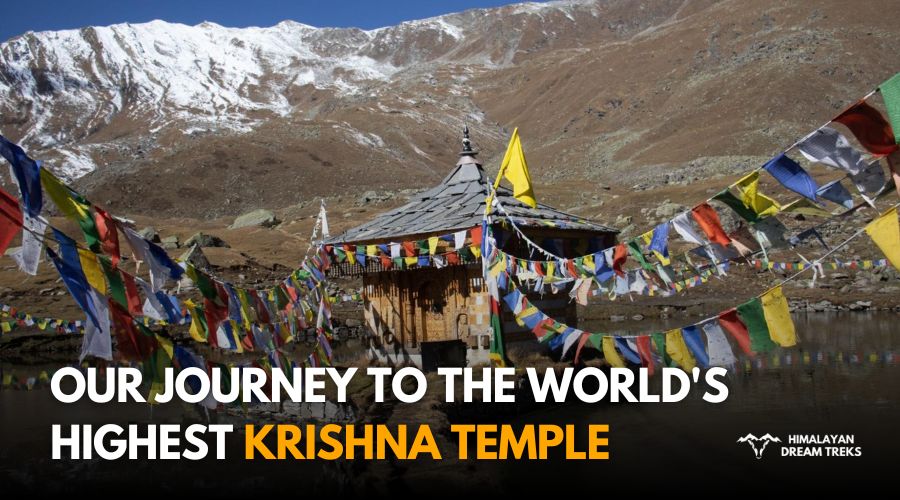
Leave a Comment